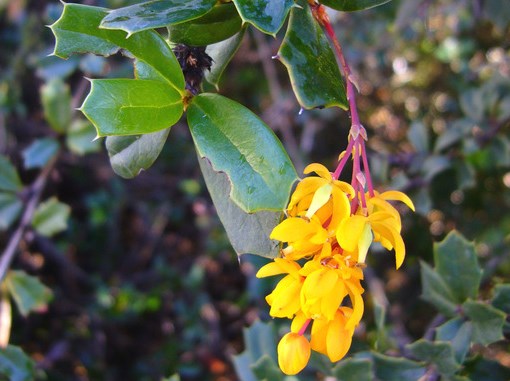Created on: Tuesday, May 17th, 2016
The following webpages were consulted for this screen: Tropicos: http://www.tropicos.org/Name/3500220; GBIF: http://www.gbif.org/species/3033905; USDA PLANTS: http://plants.usda.gov/core/profile?symbol=BEDA; Plant List: http://www.theplantlist.org/tpl/record/kew-2673673; ARS GRIN: https://npgsweb.ars-grin.gov/gringlobal/taxonomydetail.aspx?id=6845; EOL: http://eol.org/pages/483345/overview; eFloras: http://www.efloras.org/florataxon.aspx?flora_id=1&taxon_id=233500226; RHS: https://www.rhs.org.uk/plants/details?plantid=233; CNPLX: http://www.cnplx.info/nplx/species?taxon=Berberis+darwinii; Dave’s Garden: http://davesgarden.com/guides/pf/go/1657/; Weeds of Australia: http://keyserver.lucidcentral.org/weeds/data/media/Html/berberis_darwini... congener (http://keyserver.lucidcentral.org/weeds/data/media/Html/berberis_vulgari...); Victorian Resources Online: http://vro.agriculture.vic.gov.au/dpi/vro/vrosite.nsf/pages/weeds_darwin... Learn 2 Grow: http://www.learn2grow.com/plants/berberis-darwinii/; Global Invasive Species Database: http://www.learn2grow.com/plants/berberis-darwinii/; Tasmania WRA: http://dpipwe.tas.gov.au/Documents/Berberis-darwinii-assessment.pdf; Weedbusters (congener): http://www.weedbusters.org.nz/weed-information/berberis-glaucocarpa/59/; NWCB: http://www.nwcb.wa.gov/detail.asp?weed=181
Reviewed by Denise Knapp and Eric Wrubel.
- < 13 : accept (low risk of invasiveness)
- 13 - 15 : evaluate further
- > 15 : reject (high risk of invasiveness)

